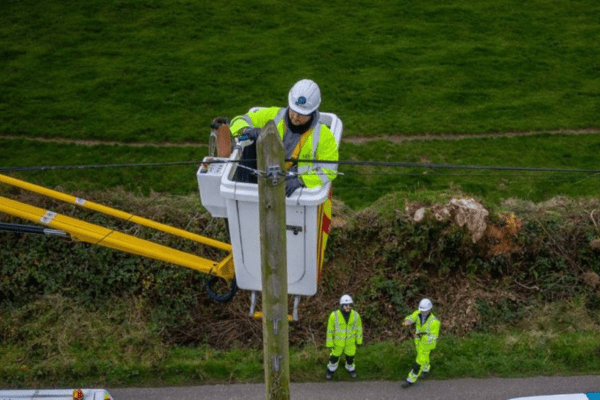Understanding CI/CD
In software development, CI/CD has become an indispensable practice for ensuring efficiency, reliability, and quality in the development lifecycle. This glossary page will break down the fundamental concepts, processes, tools, and best practices surrounding CI/CD, empowering practitioners to harness its potential for streamlined software delivery.
What is CI/CD?
At its core, CI/CD represents a set of practices and principles aimed at automating and enhancing the process of delivering software. CI/CD encompasses Continuous Integration (CI) and Continuous Delivery (CD), two interrelated but distinct concepts that, when brought together, optimize the software development lifecycle.
Continuous Integration is the process of eliciting fast, automated feedback on the correctness of your application every time there is a change to the code.
Continuous Delivery builds upon the earlier concept by providing fast, automated feedback on your application’s correctness and production readiness every time there is a change to code, infrastructure, or configuration.
The Importance of CI/CD in Modern Development
CI/CD is instrumental in speeding up the delivery of software features, enhancing collaboration among teams, and maintaining high product quality. By automating processes like testing and deployment, CI/CD accelerates time-to-market, fosters collaboration, and ensures product reliability. This approach enables organizations to adapt quickly to market changes, innovate continuously, and meet evolving customer needs effectively.
However, it’s worth noting findings from the 2023 “Accelerate State of DevOps Report” that indicated a minor increase in the effect of Continuous Integration on team performance, organizational performance, and software delivery performance. Surprisingly, no significant effect was demonstrated on operational performance. Despite this, CI/CD remains a cornerstone of modern software development practices, driving efficiency, agility, and innovation across the software development lifecycle.
CI/CD Pipeline
A CI/CD pipeline serves as the backbone of automated software delivery, orchestrating a series of stages and actions from code changes to deployment. Where CI stands for Continuous Integration and CD stands for Continuous Delivery, the term “pipeline” refers to the automation of the building, testing, and deployment of applications, ensuring a streamlined and efficient workflow.
Overview of a CI/CD Pipeline
A typical CI/CD pipeline consists of three main stages, each designed to fulfill specific objectives within the software delivery process. These stages include the build stage, test stage, and deploy stage.
Stages of the CI/CD Pipeline: Build Stage
The build stage in the CI/CD pipeline encompasses the compilation of source code, dependency resolution, and artifact generation. It serves as the foundation for subsequent testing and deployment phases, ensuring that code changes are compiled into executable artifacts efficiently and reliably before undergoing further validation.
Stages of the CI/CD Pipeline: Test Stage
The test stage in the CI/CD pipeline involves running a battery of automated tests, including unit tests, integration tests, and acceptance tests. These tests validate the application’s functionality, performance, and stability, providing crucial feedback on code quality and identifying potential issues early in the development process.
Stages of the CI/CD Pipeline: Deploy Stage
The deploy stage in the CI/CD pipeline automates the deployment of validated code changes to production or staging environments. It ensures that the application is consistently and reliably deployed, reducing the risk of human error and enabling rapid and reliable releases to end-users.
Key Components of CI/CD
Critical components of CI/CD include:
- Version control systems
- Automated build and test tools
- Deployment automation frameworks
- Monitoring and logging solutions
Continuous Integration
Continuous Integration involves frequently integrating code changes into a shared repository, accompanied by automated builds and tests. This practice promotes early detection of defects and fosters collaboration among development teams.
Continuous Delivery and Continuous Deployment: What’s the Difference?
Continuous Delivery focuses on automating the deployment process up to the production environment, allowing for manual intervention before release. The fundamental tenet of Continuous Delivery is to work so that our software is always in a releasable state. To achieve this, one needs to work with high quality. That way, when a problem is detected, it is easy to fix, so that we can recover to releasability quickly and easily.
In contrast, Continuous Deployment automatically deploys every change to production without human intervention. It streamlines the release process further but requires a high level of confidence in automated testing and deployment processes.
Reviewing Version Control Systems
Version Control Systems involve assessing platforms like Git, Subversion, or Mercurial to manage code changes, track history, and facilitate collaboration. It ensures teams select the most suitable system for seamless integration into CI/CD pipelines, enabling efficient code management and versioning across the development lifecycle.
The Role of Automated Builds and Tests in CI/CD
Automated processes compile code changes, execute tests, and generate feedback swiftly and reliably. They ensure code integrity, identify issues early, and maintain high-quality standards throughout the development cycle, supporting the core principles of CI/CD for efficient software delivery.
CI/CD Best Practices
Adherence to CI/CD best practices is essential for maximizing the efficacy of the development process and realizing the full benefits of automation. Key practices include:
Ensuring Consistent Environments
Maintaining consistent development, testing, and production environments across the CI/CD pipeline is essential to minimizing discrepancies and ensuring predictable outcomes. Consistent environments facilitate reliable testing and deployment processes, enhancing overall software quality and streamlining the development lifecycle.
Maintain a Single Source Repository
Centralizing code management fosters collaboration and streamlines version control. With all code housed in one repository, teams can easily track changes, manage branches, and maintain a cohesive development history. This practice promotes efficiency, clarity, and consistency across the software development lifecycle.
Implement Automated Testing
Automated testing, including unit tests, integration tests, and end-to-end tests, accelerates feedback cycles and enhances the reliability of software releases. By executing tests automatically, teams ensure thorough and consistent assessment of code changes, reducing manual effort and accelerating feedback loops. Automated testing enhances the reliability and robustness of applications, fostering confidence in the software delivery process.
Keep the Build Fast
Optimizing build times enhances developer productivity and reduces time-to-feedback, fostering a culture of rapid iteration, deployment, and experimentation. By minimizing build duration, teams maintain momentum, respond promptly to changes, and uphold efficiency throughout the software development lifecycle.
Make the Build Self-Testing
This ensures that the automated build processes include self-testing mechanisms to validate code integrity and detect regressions early in the development lifecycle. By incorporating self-testing capabilities, the build process can automatically verify the integrity and functionality of the code changes. This proactive approach enhances reliability, accelerates error detection, and fosters confidence in the software delivery pipeline.
Implementing CI/CD in your Project
Successfully implementing CI/CD in a project necessitates a systematic approach, beginning with assessing current development practices and tooling.
Assessment of Current Development Practices
Evaluating existing workflows, tools, and methodologies provides insights into areas ripe for automation and improvement. It enables teams to identify strengths, weaknesses, and areas for improvement in their development processes. Through comprehensive assessment, teams can make informed decisions, prioritize enhancements, and effectively align strategies with organizational goals.
Choosing the Right CI/CD Tools
Selecting appropriate CI/CD tools tailored to the project’s requirements is crucial for optimizing software delivery pipelines. It involves evaluating tools based on factors like compatibility, scalability, and feature sets to align with project requirements. By selecting suitable CI/CD tools, teams can streamline development workflows, enhance automation, and accelerate the delivery of high-quality software.
Building your CI/CD Pipeline
Building your CI/CD Pipeline involves designing and configuring a series of automated workflows to facilitate software delivery. It includes defining stages, integrating tools, and orchestrating processes to streamline code integration, testing, and deployment. By constructing a robust CI/CD pipeline, teams establish a foundation for efficient, reliable, and scalable software delivery.
CI/CD and DevOps
CI/CD and DevOps are symbiotic disciplines that share common goals of accelerating software delivery, enhancing collaboration, and fostering a culture of continuous improvement.
Understanding the Relationship between DevOps and CI/CD
DevOps embodies a broader cultural and organizational shift emphasizing collaboration, automation, and continuous feedback across development, operations, and quality assurance functions. CI/CD practices, however, serve as foundational practices within the DevOps framework, enabling rapid, reliable, and automated software delivery pipelines. The integration of CI/CD into DevOps workflows enhances agility, efficiency, and innovation by promoting seamless collaboration, automation, and feedback loops throughout the software development lifecycle.
How CI/CD Improves the DevOps Workflow
CI/CD enhances the DevOps workflow by automating key aspects of software delivery, promoting collaboration, and accelerating feedback loops. It fosters a culture of continuous improvement and integration, aligning development, operations, and quality assurance teams towards common objectives. CI/CD facilitates rapid iteration, seamless deployment, and reliable software delivery, fostering agility and innovation within DevOps environments.
In conclusion, CI/CD represents a paradigm shift in software development, empowering teams to deliver high-quality software at scale with unprecedented speed and efficiency. By embracing CI/CD principles and best practices, organizations can unlock new avenues of innovation and drive tangible business outcomes.





